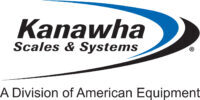Rail scales are scales installed in train rails to measure the weight of train cars as they travel. Scales can measure if the cars are too heavy and could be dangerous or if the weight has changed throughout the journey. Monitoring the weight of train cars ensures that nothing is added or removed without the train engineer’s knowledge. This article will focus on the features of a rail scale and how they are implemented in rail yards across the world.
WHAT ARE RAIL SCALES AND HOW DO THEY WORK?
Rail scales are a type of weighing equipment used to measure the weight of railcars and their contents. The scale is fitted on the existing rails, to which there are load cells under the rails to capture weight. These scales are important for ensuring that trains are properly loaded, that they are in compliance with weight regulations, and they’re crucial to collecting freight revenue. While train scales can provide many benefits, there are also some common problems that users may encounter.
These scales can also monitor the behavior of cargo as the train makes its way toward its destination. If a train car holds cargo such as liquid or gas, weighing the car periodically will help see if temperature changes affect the cargo and how to preserve the freight as much as possible. These scales are also used to ensure that the railroad cars aren’t overloaded so as to not damage the rails and become a safety hazard to the public.
PROBLEMS WITH RAIL SCALES?
Incorrect readings: One common problem with train scales is incorrect readings. This can happen if the scale is not properly calibrated or if it is not used correctly. Incorrect readings can lead to errors in weight measurements, which can cause problems with loading and transport, as well as with inventory management and production processes. To avoid this problem, it is important to ensure that the scale is properly calibrated and that it is used according to the manufacturer’s instructions.
Scale damage: Another common problem with train scales is damage to the scale itself. Train scales are designed to be durable, but they can still be damaged if they are not used properly. For example, if the scale is overloaded or if it is used on uneven surfaces, it can be damaged. This can lead to inaccurate readings and can also cause safety problems. To avoid this problem, it is important to use the scale within its rated capacity and to avoid using it on uneven or unstable surfaces.
Outside interference: A third common problem with train scales is interference from other electronic equipment. This can come in the form of a lightning strike from a storm or issues with cables or grounding having kinks in them. Train scales use electronic sensors to measure weight, and these sensors can be affected by other electronic equipment that is nearby. This can cause the scale to give incorrect readings or to malfunction altogether. To avoid this problem, it is important to keep the scale away from other electronic equipment and to follow the manufacturer’s instructions for using the scale in the presence of other electronic equipment.
In conclusion, train scales are an important tool for ensuring that trains are properly loaded and in compliance with weight regulations. However, these scales can be prone to common problems, such as incorrect readings, damage, and interference from other electronic equipment. To avoid these problems, it is important to properly calibrate and maintain the scale, to use it within its rated capacity, and to follow the manufacturer’s instructions. By taking these steps, users of train scales can ensure that they get accurate and reliable weight measurements.
